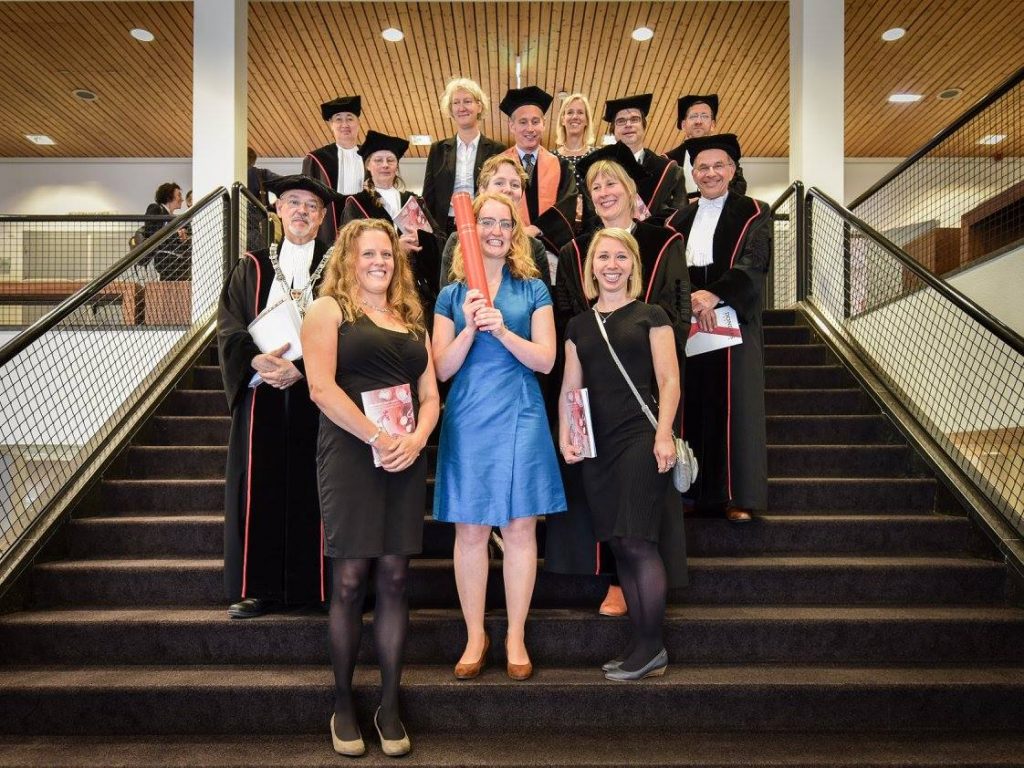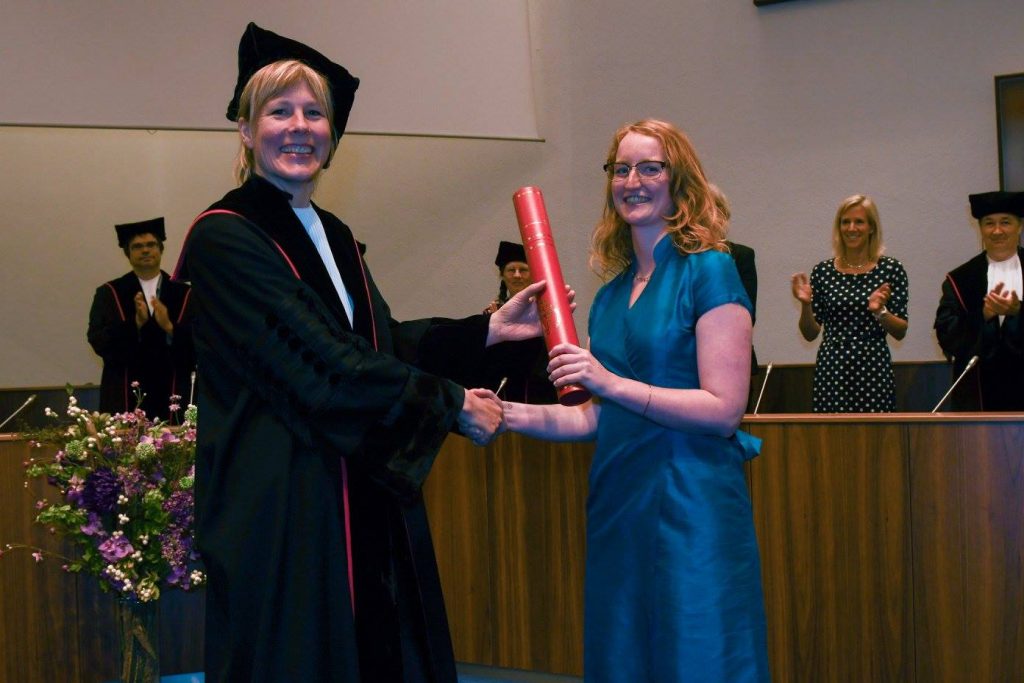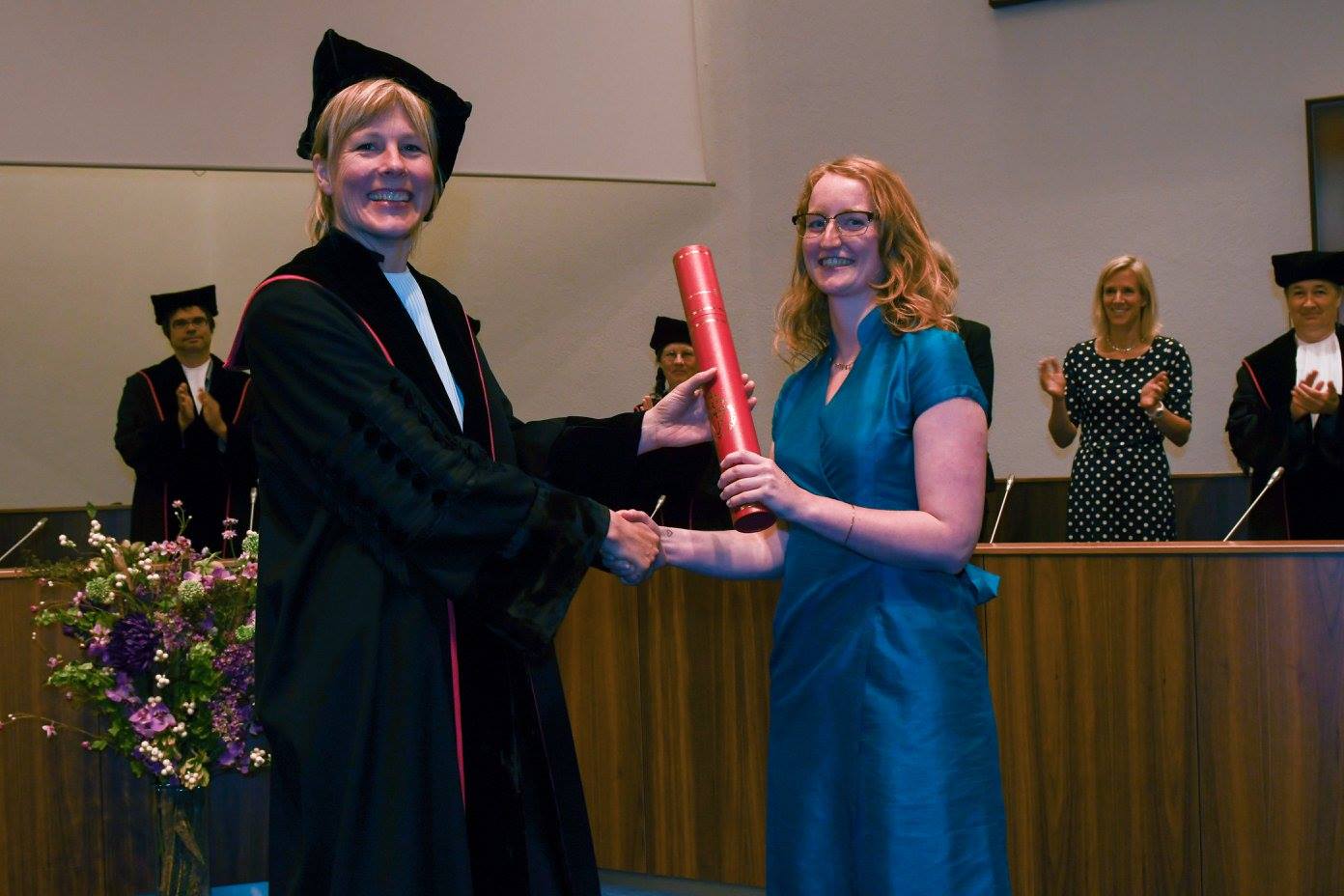This post is also available in Dutch.
Scientists are learning a great deal about habits, and Lieneke Janssen shares with us what the latest findings are.
Lieneke recently completed her PhD at the Donders Institute, where she conducted research on habits. Specifically, she examined the nature of compulsive behavior and looked into how people can break bad habits. We asked Lieneke a few questions, so that we could also find out how to improve our habits.

How do you define habits, and what are bad habits in particular?
“Habits result from learning. When something has worked well for us on previous occurrences, like how the delicious taste of chocolate helped us forget our sorrows, we let these things slip in to form habits. The brain creates a ‘shortcut’ so that whenever we encounter this ‘goodness’ again, we don’t need to think about it; instead, we just go for it. Habits make our behavior fast and efficient, but they bypass our goals and our rational thinking. This makes it more difficult for us to consciously change our habits, as they are not very flexible. For example, when we’ve eaten to the point that our stomach is full, if we feel low we will still reach for more chocolate. Of course, this is not a terrible problem if it happens every once in a while, but if you start to experience negative side effects, then this habit has become a problem.”
Why is it so difficult to break bad habits?
“Habits are strong associations that exist in our mind, which bypass our goals and rationale. So new goals, such as changing our diet or losing weight, are not taken into consideration when taking the shortcut of eating chocolate. It’s like a path that has been taken many, many times: the more often the path is used, the more ingrained it becomes. As a result, it is easier to take the path with the least resistance, making it harder to deviate from this path because that would require more effort.”
And why is it difficult to form good habits?
“Forming new habits requires discipline. You need to pave a new path and you need to pave and use it well before it can become the path of least resistance, especially when your new good habit opposes your ingrained old bad habit. Forming good habits requires you to pair a certain stimulus (some external cue, mood, or situation) with an action that you wish to turn into a good habit. This needs to be immediately followed by a reward, because you need to motivate your brain if you want to create a new shortcut. If you repeat this often enough, this new path may turn into a shortcut. Unfortunately, there’s no golden rule as to how many days or how often you should repeat this in order to form a proper habit. It all depends on how fast you learn, how strongly your brain responds to the rewards you use to motivate yourself, how consistent you are, etc. “
What can we do to improve our habits?
“To breakbad habits and stick to our goals, we can do three things:
- Remove the stimulus that is associated with our habit (this can be difficult).
- Form new good habits that are stronger than the old bad ones, so that the old ones slowly fade away (with the risk of relapse!).
- Learn to catch ourselves before we take the shortcut, so that we have the space to make a conscious decision again.”
In my next blog post, you will find more tips about building better habits from the experts who attended Lieneke’s graduation symposium. Stay tuned!
For more information, consult Lieneke’s publications here and here.
This blog was written by Marisha. Edited and translated by Jeroen.


Image credits: Lieneke Janssen
